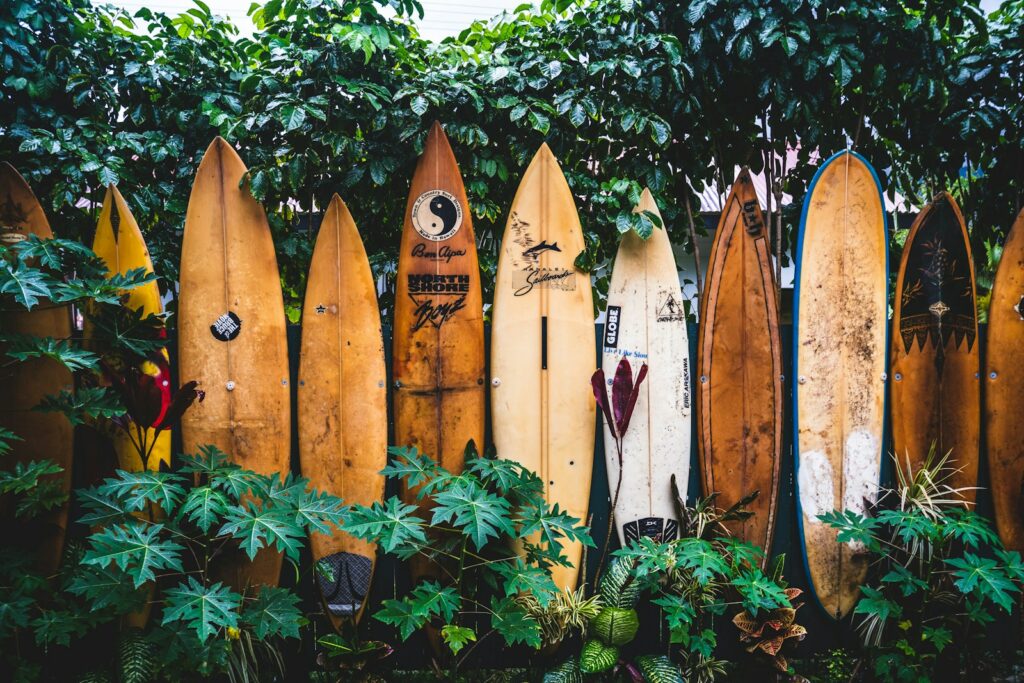The vast Pacific Ocean stretches for thousands of miles, dotted with chains of islands created from volcanic hotspots deep beneath the sea floor.
This aquatic realm has been home to the Polynesian peoples for centuries, gifted seafarers who developed the skills to navigate the ocean’s immensity with wisdom passed down generations.
Through their knowledge of swell patterns, stars, winds and migratory animals, Polynesian voyaging priests charted courses between far-flung island groups separated by daunting open ocean.
Their outrigger canoes first settled the island chains of central Polynesia. Generations later, around 300-600 AD, an ambitious Polynesian navigator, Moʻikeha, set sail into the northeast, stumbling upon a miraculous new set of volcanic peaks isolated in the sea – the Hawaiian Islands.
Over 2,500 miles from the nearest continent, Hawaiʻi’s discovery highlights the remarkable maritime mastery of these Pacific explorers.
The Islands of Polynesia
The wide triangle of Polynesia encompasses over 1,000 islands sprinkled across the central Pacific. Archipelagos like Samoa and Tonga formed idyllic habitations from volcanic hotspots on tectonic plates.
By 3000 BC, waves of exploration brought Papuan and Melanesian peoples who became the forebears of the Polynesian ethnicity.
Living from the bounty of sea harvests and growing crops in tropical warmth, Polynesians fostered a intimate connection with the ocean. Their largest double-hulled sailing canoes averaged just 100 feet yet hauled families on month-long excursions.
Oral histories tell of influential Wayfinder navigators like Ui-te-Rangiora, who voyaged for over six weeks to prove Aotearoa (now New Zealand) existed far south around 650 AD.
His legacy helped Polynesian navigation prowess proliferate across the Pacific as descended master sailors continued discovering new islands chains.
Detailed knowledge of sea creature migration patterns, swell movements and prevailing wind shifts were memorized in oral chants then woven into navigational teaching rituals.
By the 12th century, nearly every Pacific archipelago was charted from New Zealand up to Hawaii through daring long-distance voyaging traditions central to Polynesian heritage.
Navigational Skills
Without charts, compasses or sextants, ancient Polynesian sailors crossed thousands of miles steered only by their wisdom of the natural world. They noted how ocean swells refracted around islands, betraying an unseen landmass ahead. Observing wind shifts and currents aided planned courses too.
Following seasonal paths of migratory birds ensured stopping points amid unbroken blue. At night, horizon stars guided direction while changing alignments over hours marked speed. This data compiled into mental maps passed down in chants – some still today direct to islands over the curve of the sea without sighting land first.
Such non-instrument wayfinding let double-hulled sailing canoes discover every scattered Polynesian island group. The extreme maritime skills required years of apprenticeship but enabled remarkable exploration achievements for hundreds of years.
Master navigators visualized ocean patterns three-dimensionally to create reliable routes across the largest ocean expanse on Earth.

The Discovery of Hawaii
In the far northern Polynesian Triangle apex, an expanse wider than the continental United States isolates the Hawaiian archipelago. Barren atolls dot a direct line between the volcanic peaks and other central Polynesia societies near the equator over 2,500 miles south.
While the exact date remains uncertain, Hawaiian oral histories reference the navigator Moʻikeha sailing from Tahiti around 300-600 AD to discover Hawaiʻi first.
As one of few explorers braving dangerous long-distance voyaging beyond safe sight of land, his ancestral legacy continued as daughters and sons followed in subsequent decades to return to Hawaiʻi.
The islands’ vibrant reefs and lush interior valleys sustained developing unique Hawaiian customs evolved from central Polynesian heritage. Centuries later, master navigator Pāʻao charted an even more precise route between Hawaiʻi and the Marquesas Islands demonstration advanced wayfinding techniques.
Their incredible open ocean prowess was shared with other Polynesians to settlement even the most remote Pacific Islands. But Hawaii always retained strong voyaging ties back to central Polynesia as proven in oral histories of Pai‘ea Kamehameha I in the late 18th century sailing to Tahiti to claim lost ancestral lands before unifying the Hawaiian islands into one royal kingdom.
Modern Voyaging Revival
The 20th century saw much lost indigenous Pacific knowledge fade from memory under Western cultural influences. With few practitioners left by the 1970s, the oral tradition of celestial navigation and trans-ocean sailing diminished despite enabling settlement across Earth’s largest region.
Yet as radical cultural shifts ignited self-determination, interest grew around preserving island heritage. In 1973, Hawaiian anthropologist Ben Finney and Micronesian master navigator Mau Piaulug began construing the double-hulled Hōkūle‘a voyaging canoe to sail sans instruments throughout Polynesia.
Over a year, Piaulogged passed teachings to a new generation helming the canoe over 2,500 miles nonstop from Hawaiʻi to Tahiti. Their successful 1976 voyage sparked a resurgence in open-ocean wayfaring now maintained by the Polynesian Voyage Society. Dozens of similar programs now cultivate traditional seafaring to explore and honor their ancestral legacy.
As amazing ancient knowledge returns via hands-on practice, Hōkūle‘a and her captains continue symbolic voyages building cultural bridges between Pacific societies and beyond through the unifying spirit of ancestral exploration.
Resources
- Polynesian Navigation & Settlement of the Pacific: World History Encyclopedia, https://en.wikipedia.org/wiki/Polynesian_navigation
- Navigating the Pacific with Wind, Waves, and Stars: Eos, American Geophysical Union, https://eos.org/articles/navigating-the-pacific-with-wind-waves-and-stars
- Polynesian Voyaging Society: https://en.wikipedia.org/wiki/Polynesian_Voyaging_Society
- Hōkūleʻa: https://hokulea.com/
- Te Papa Museum: https://tepapa.govt.nz/ (For information on Maori voyaging)